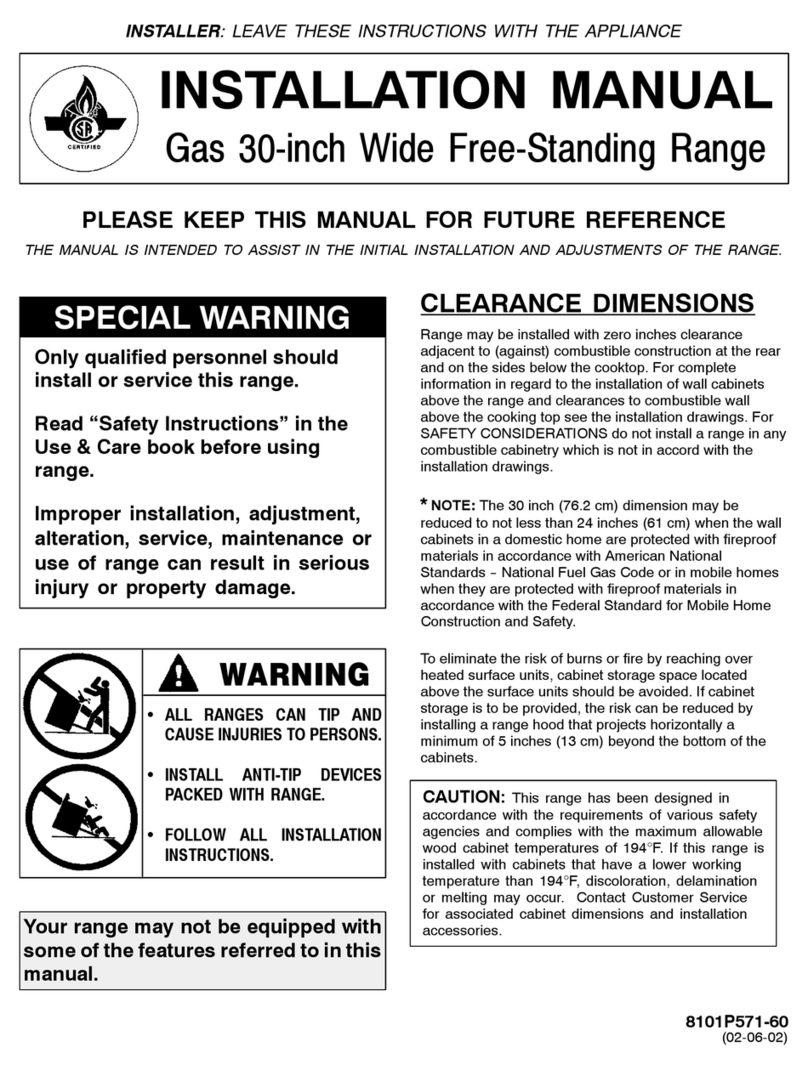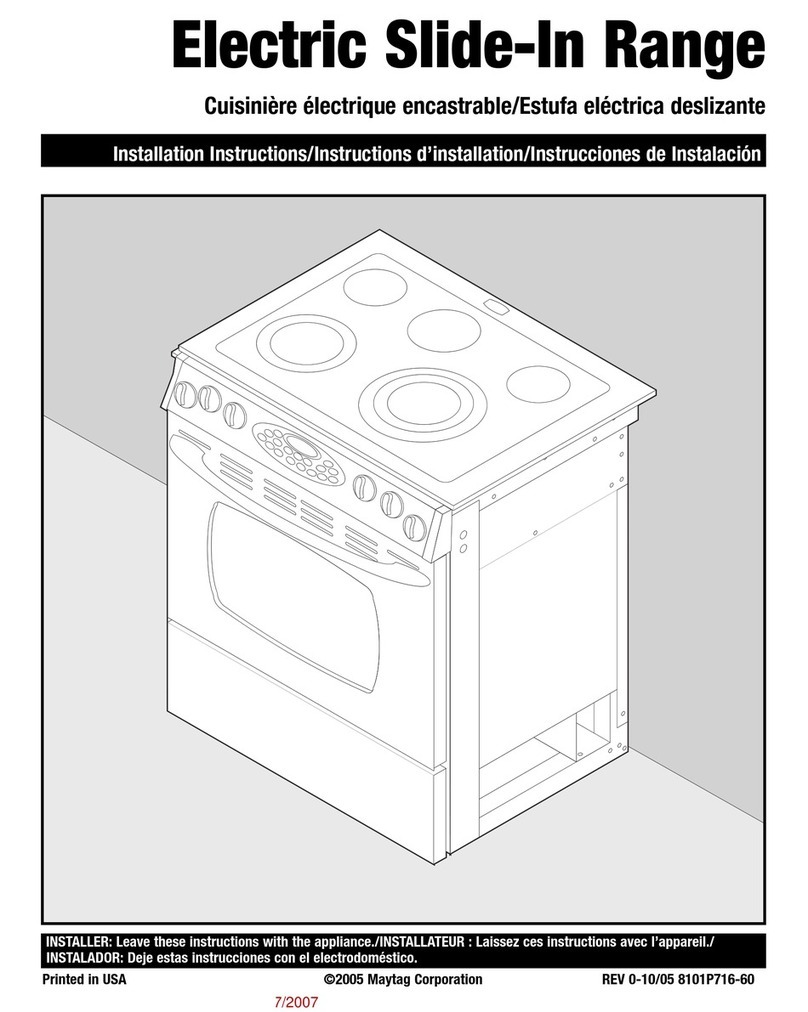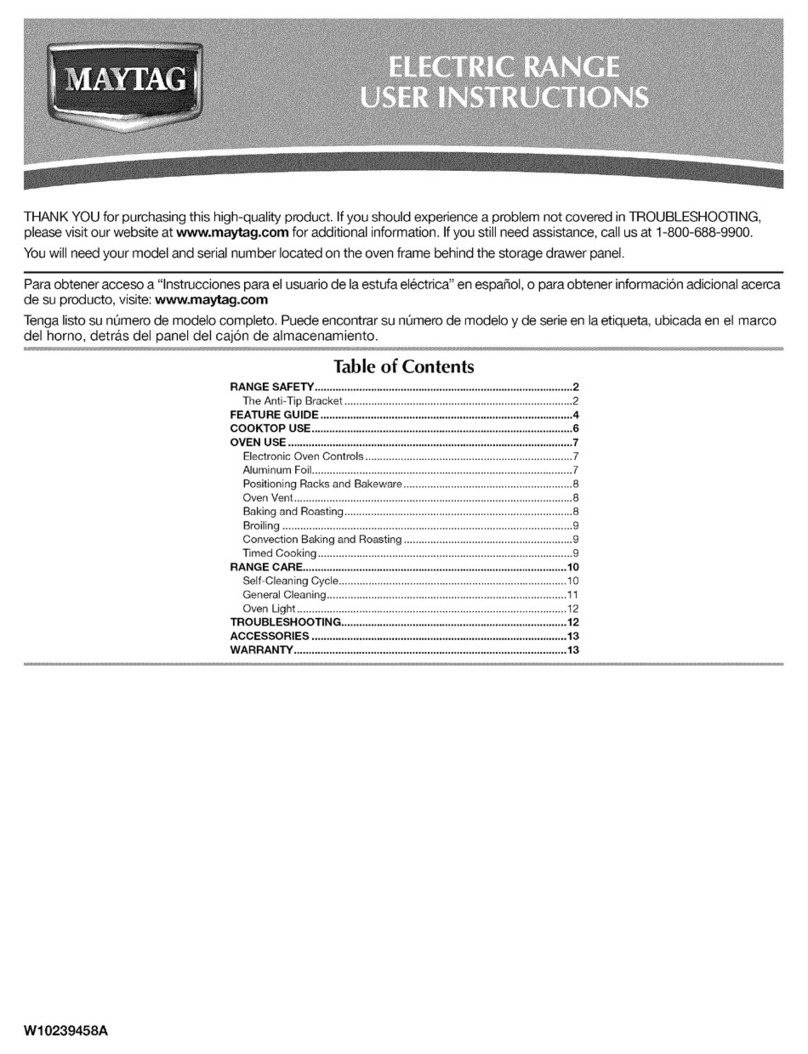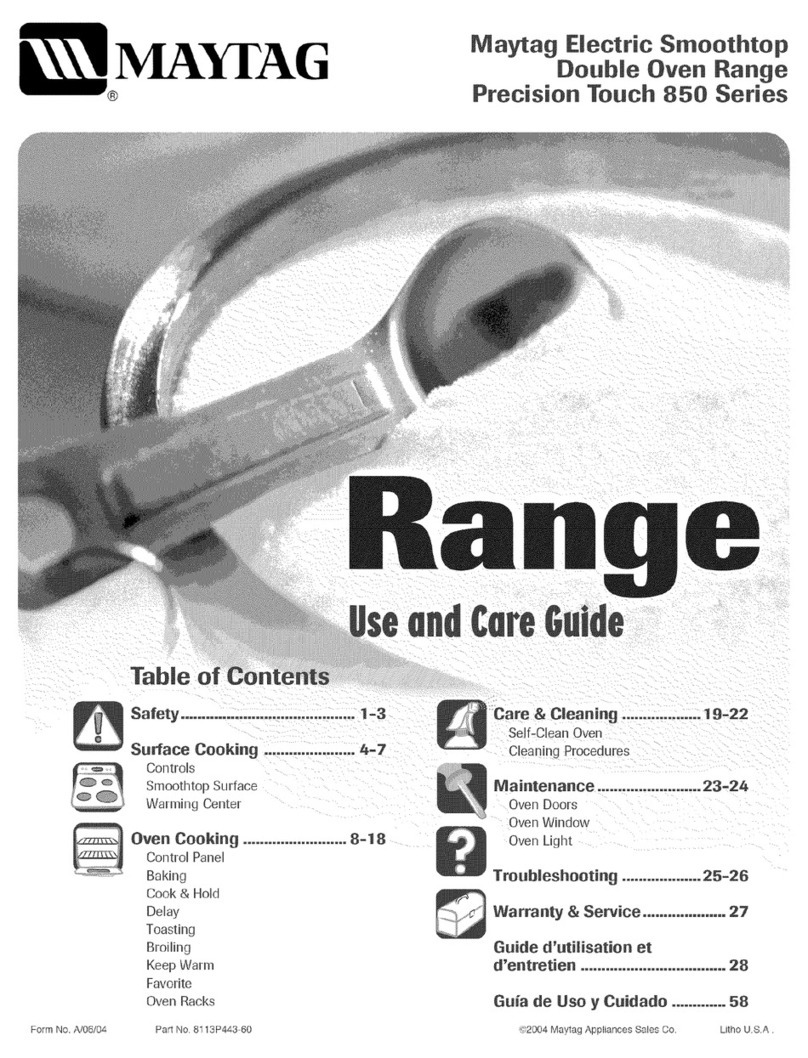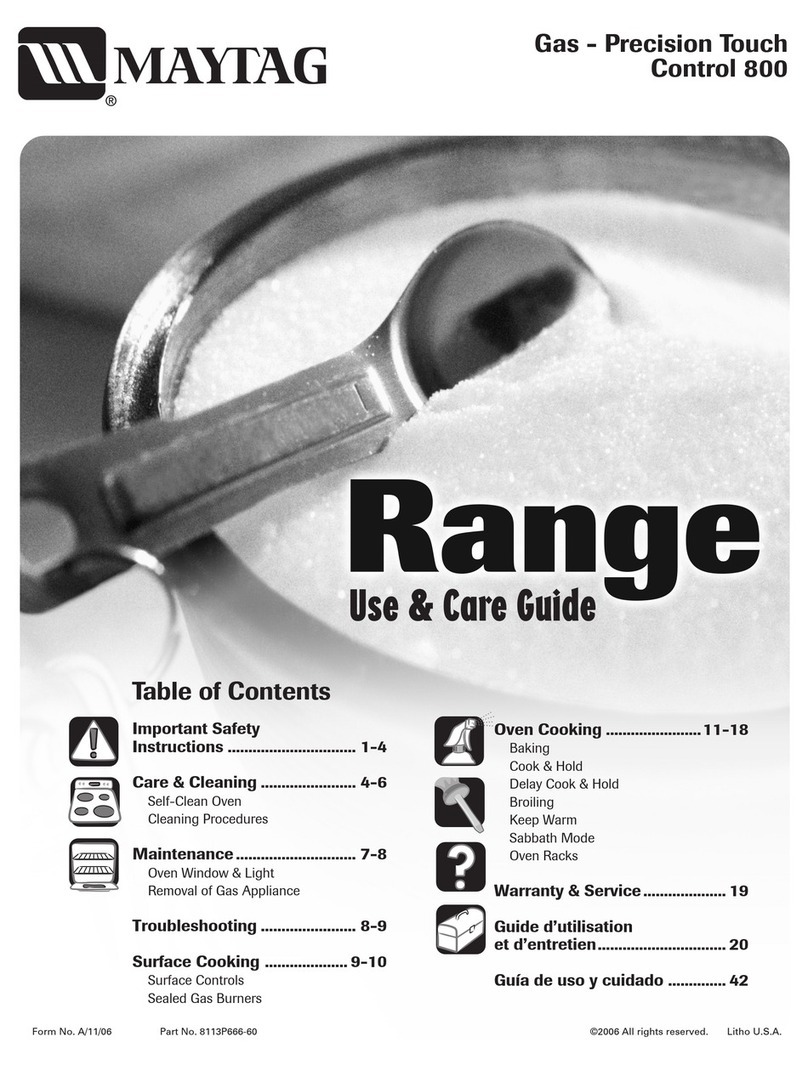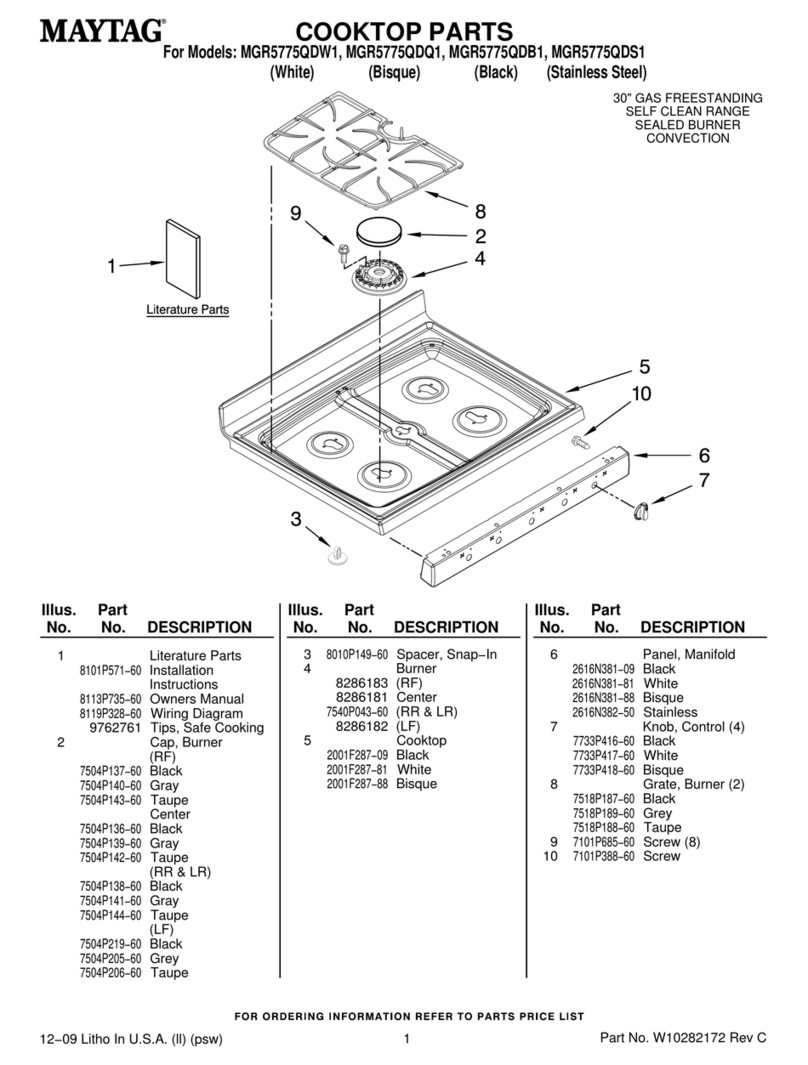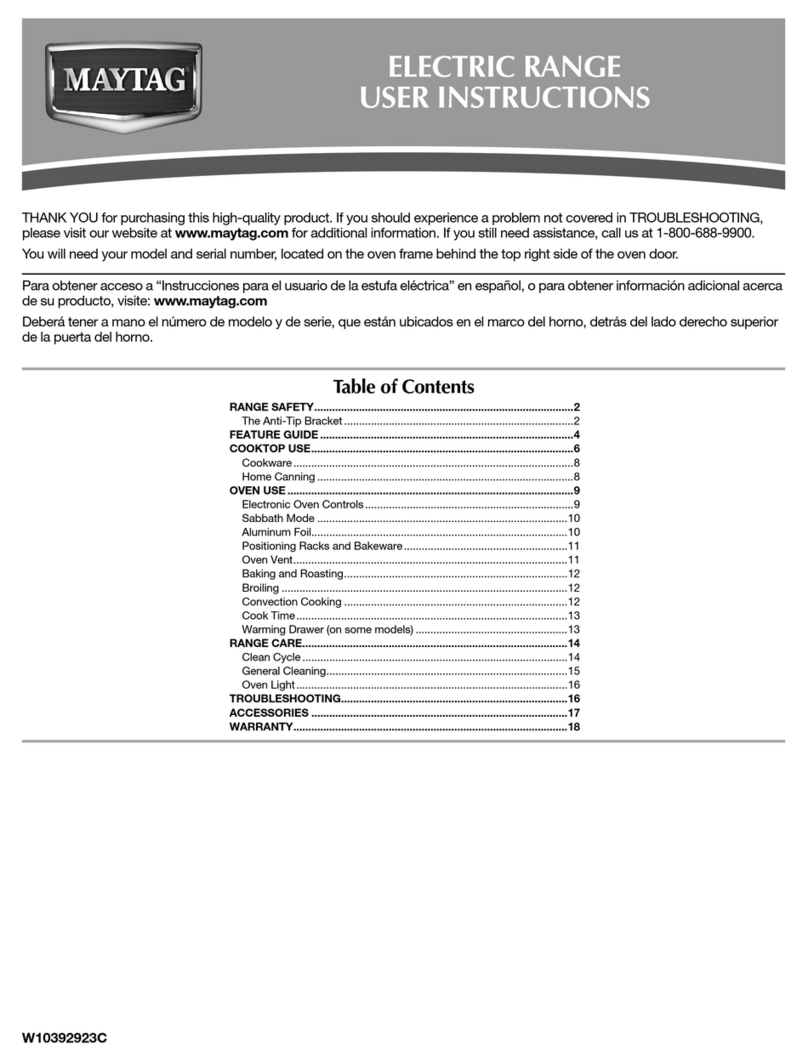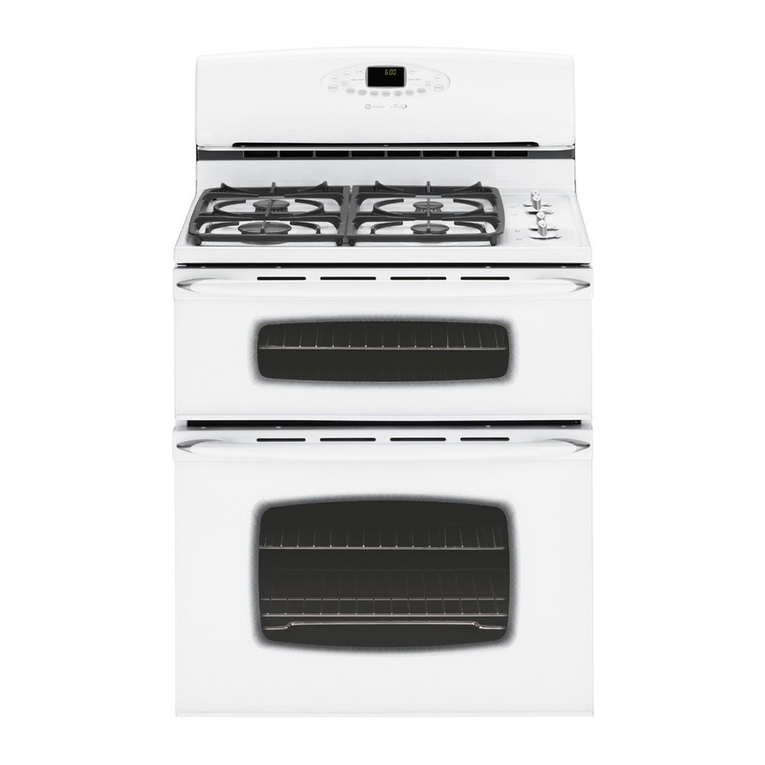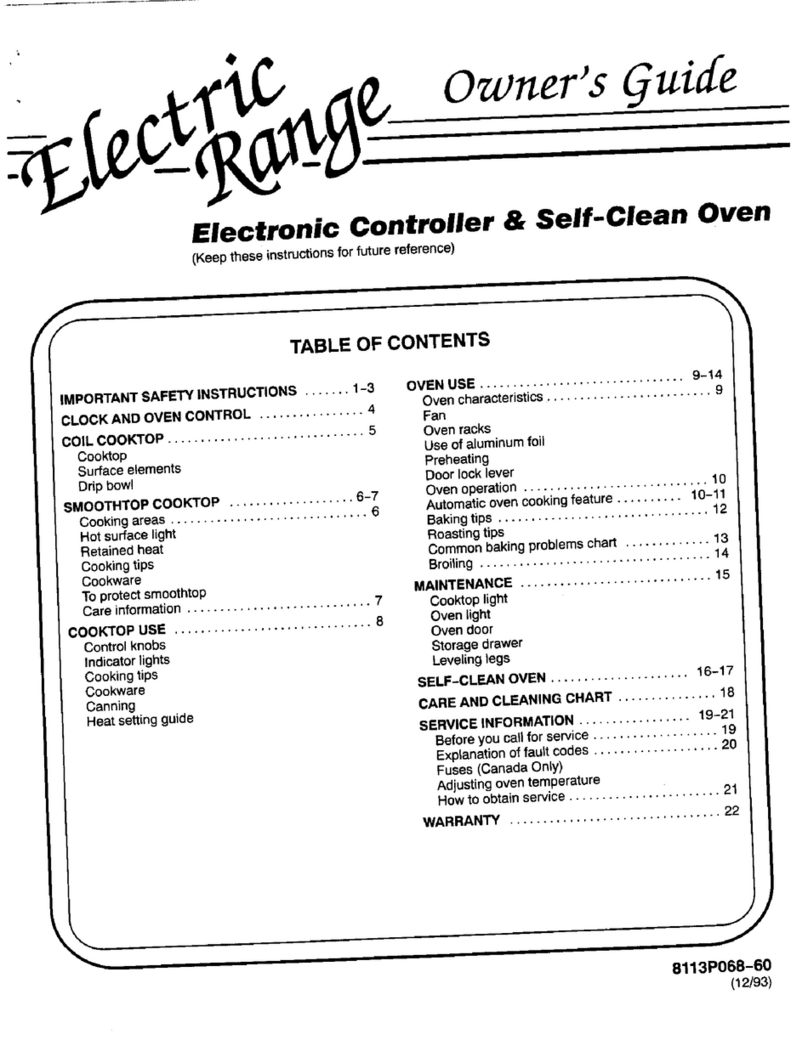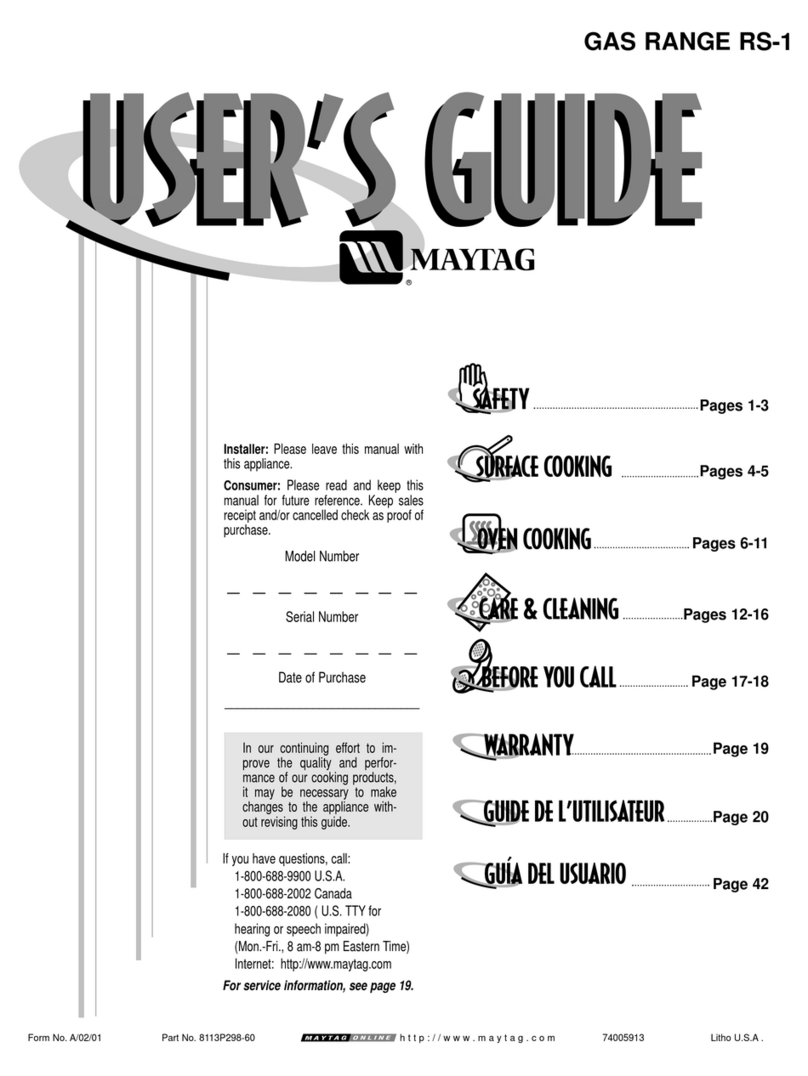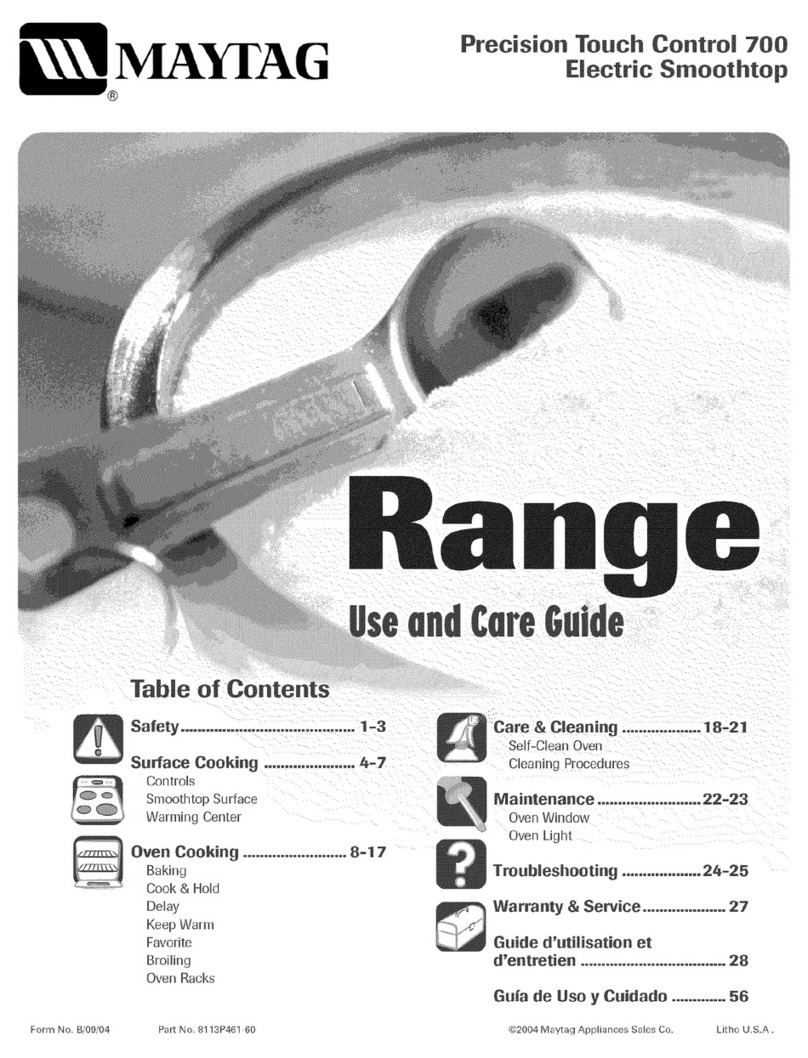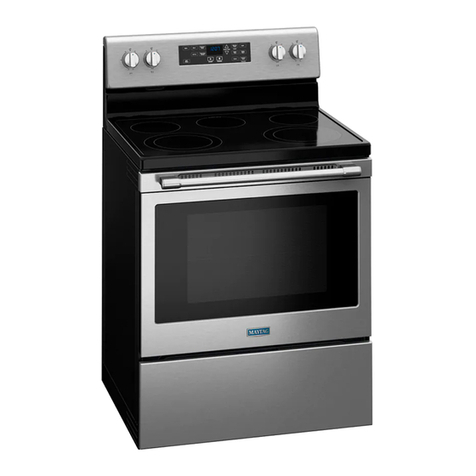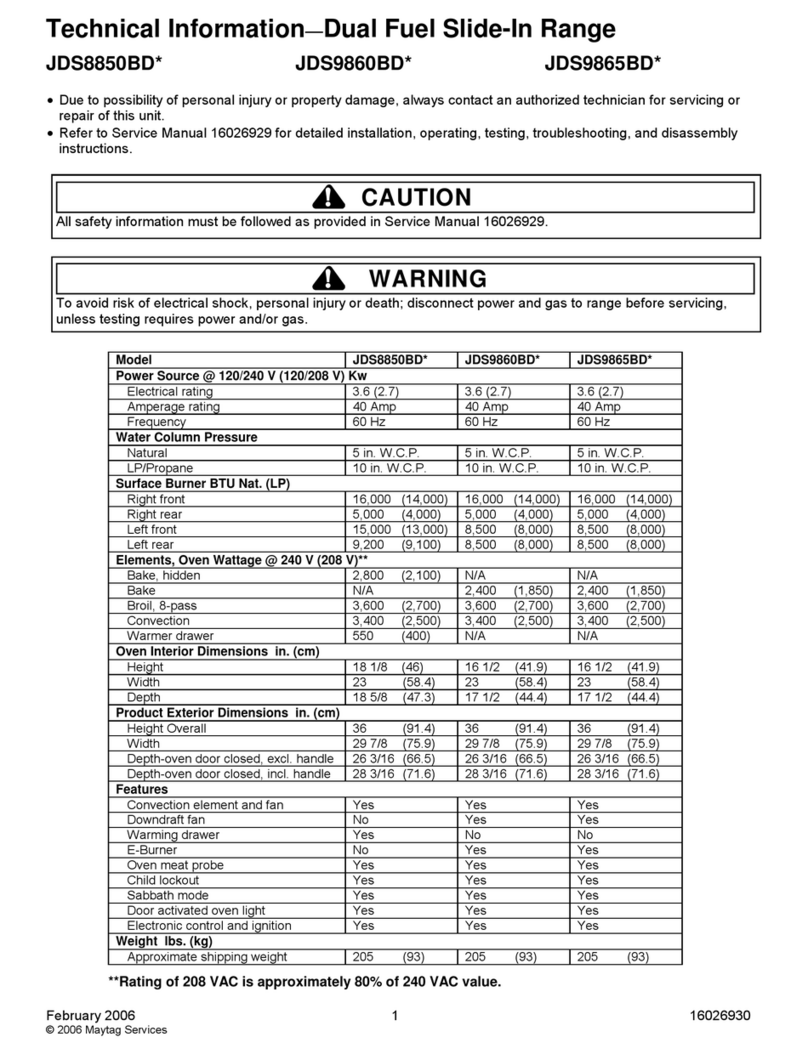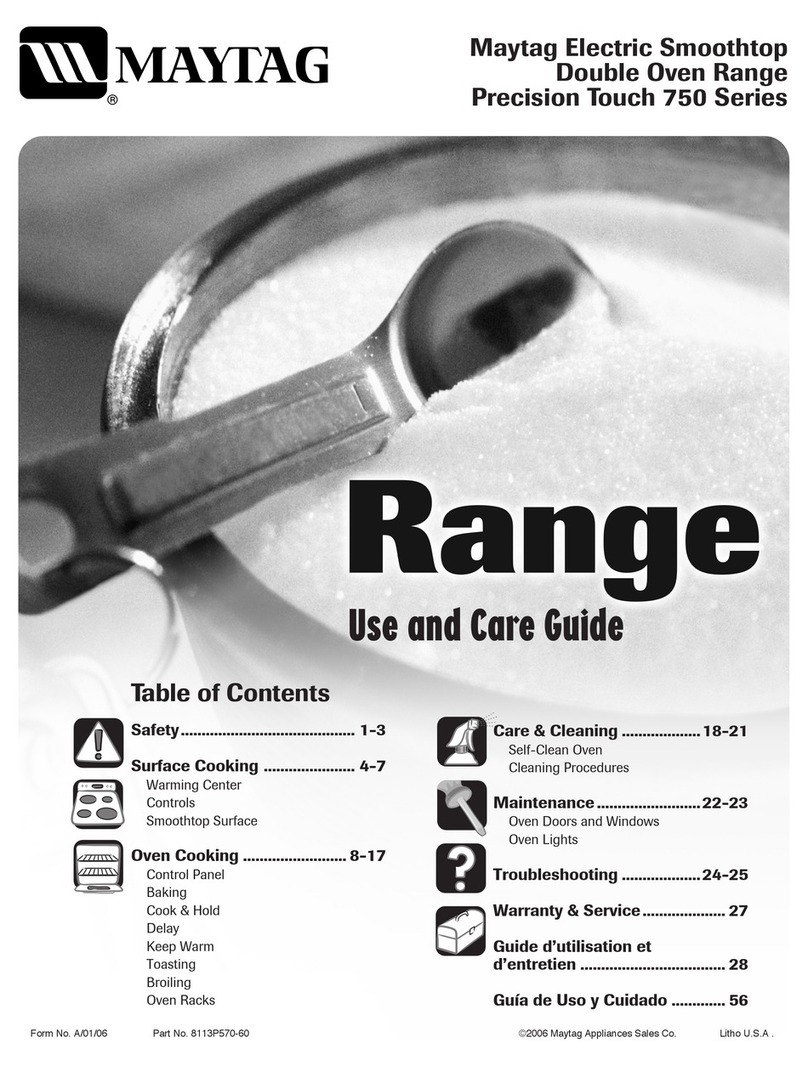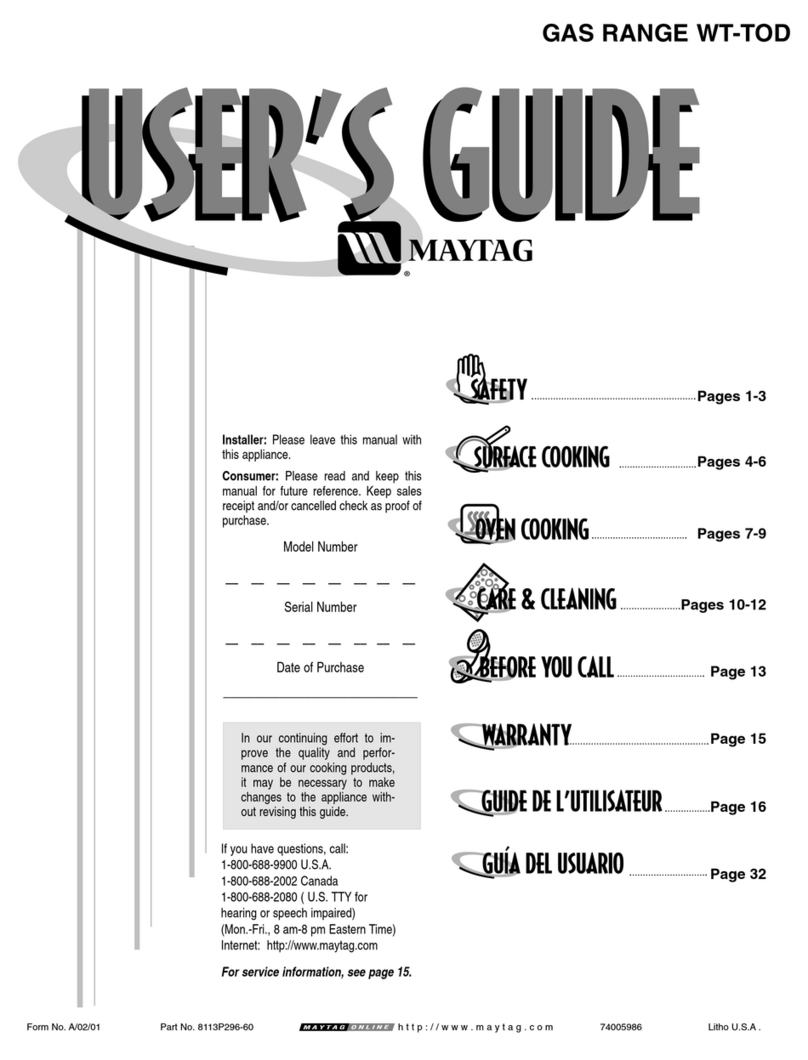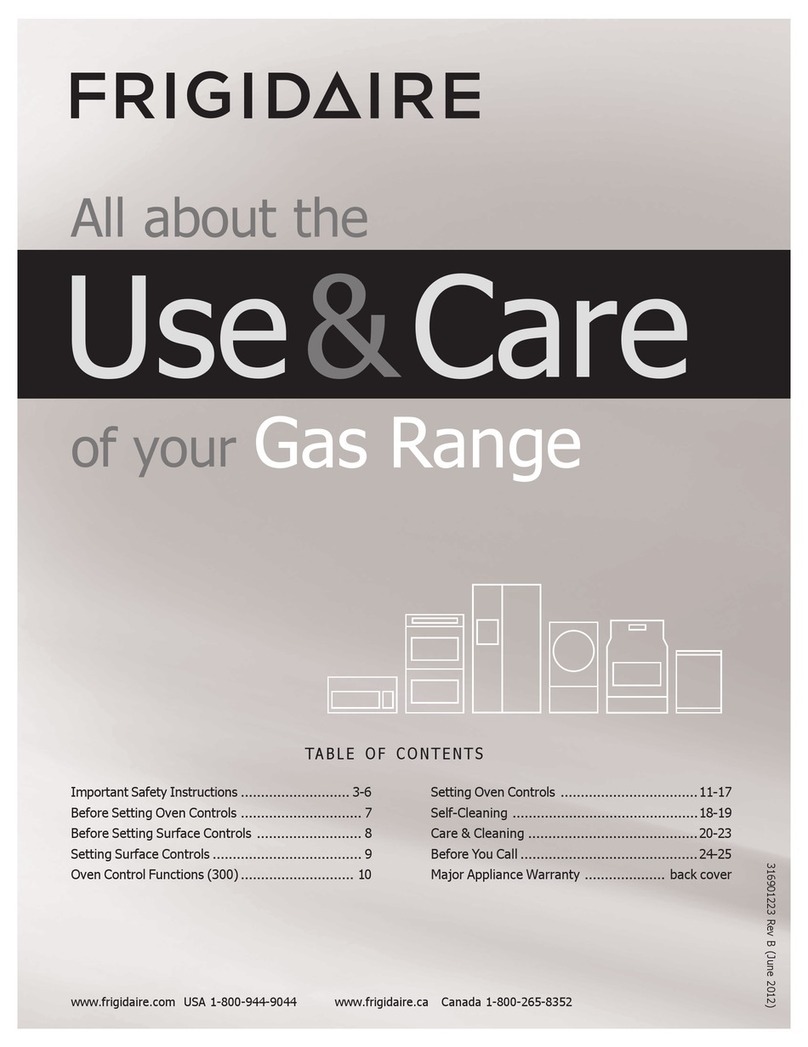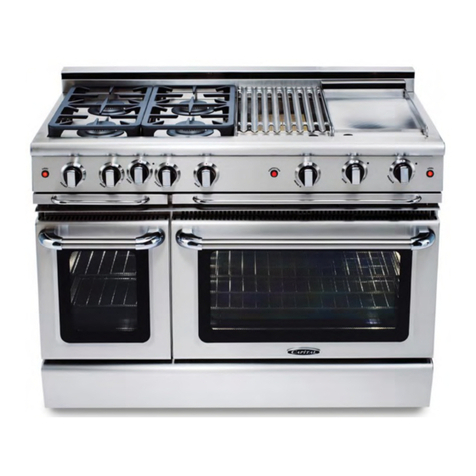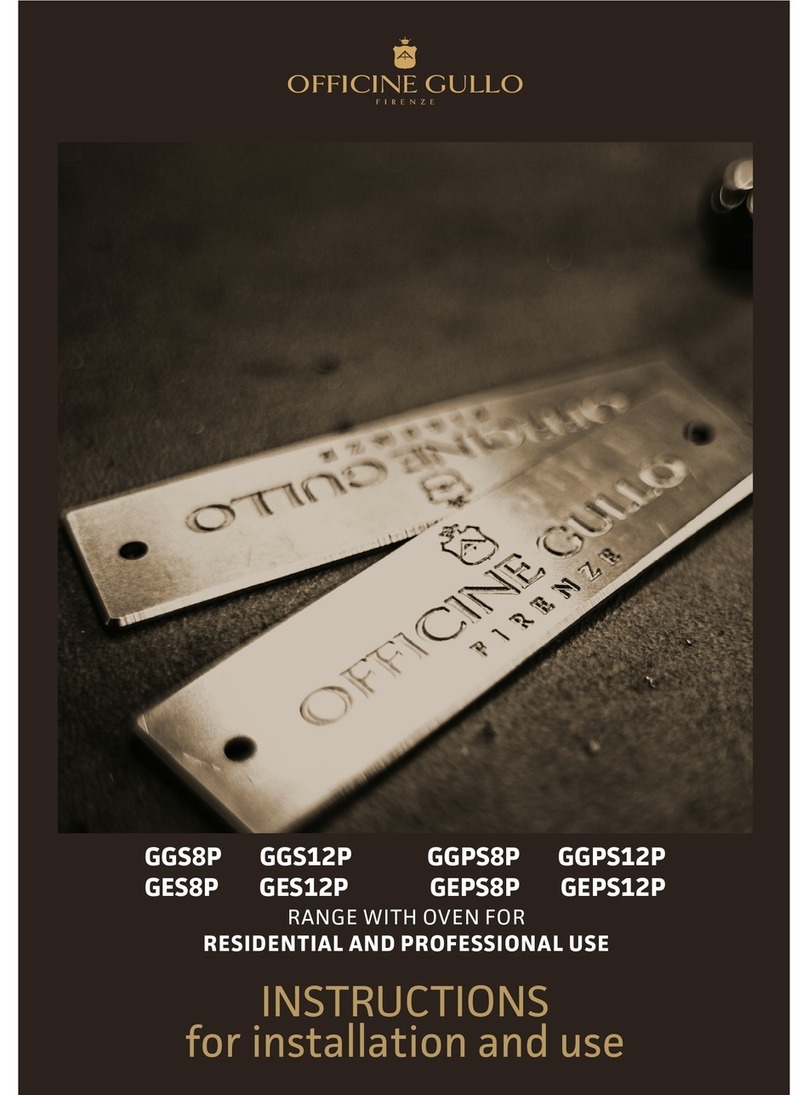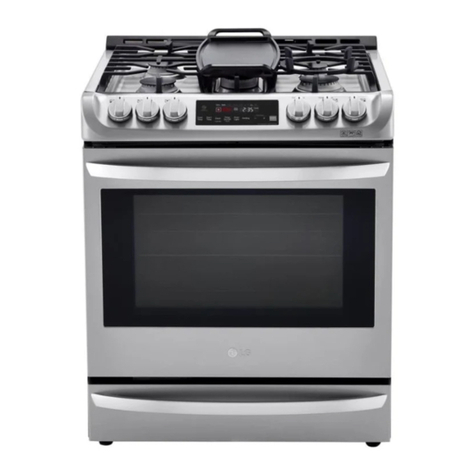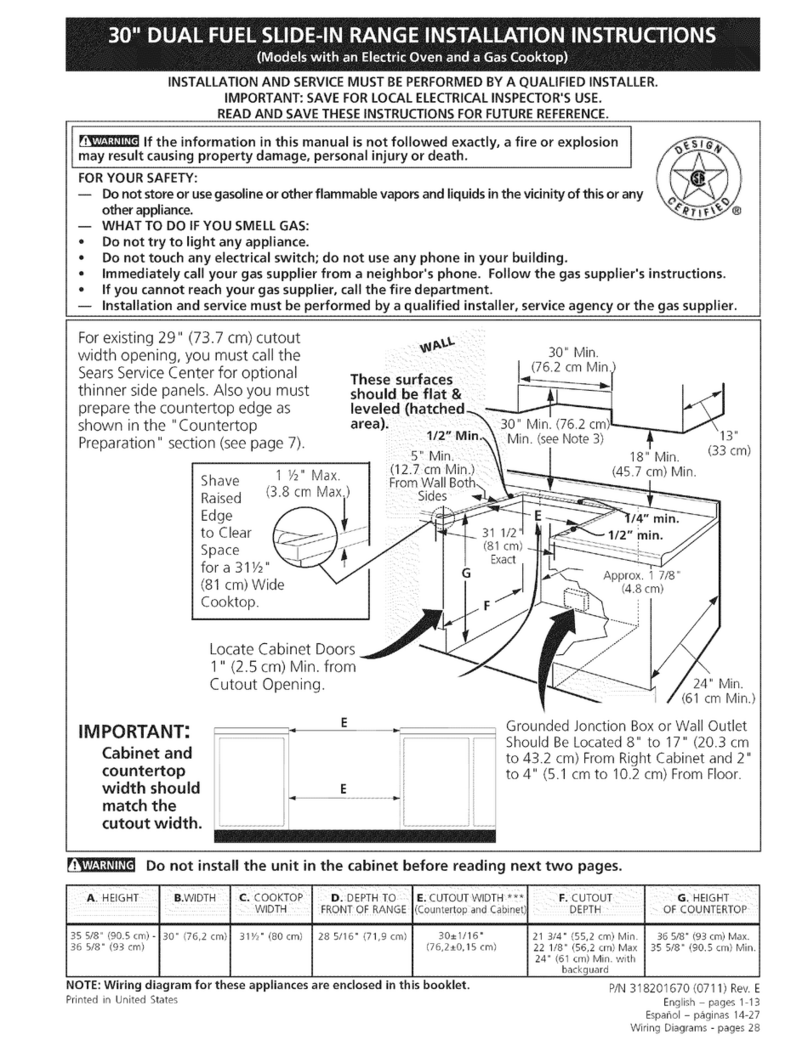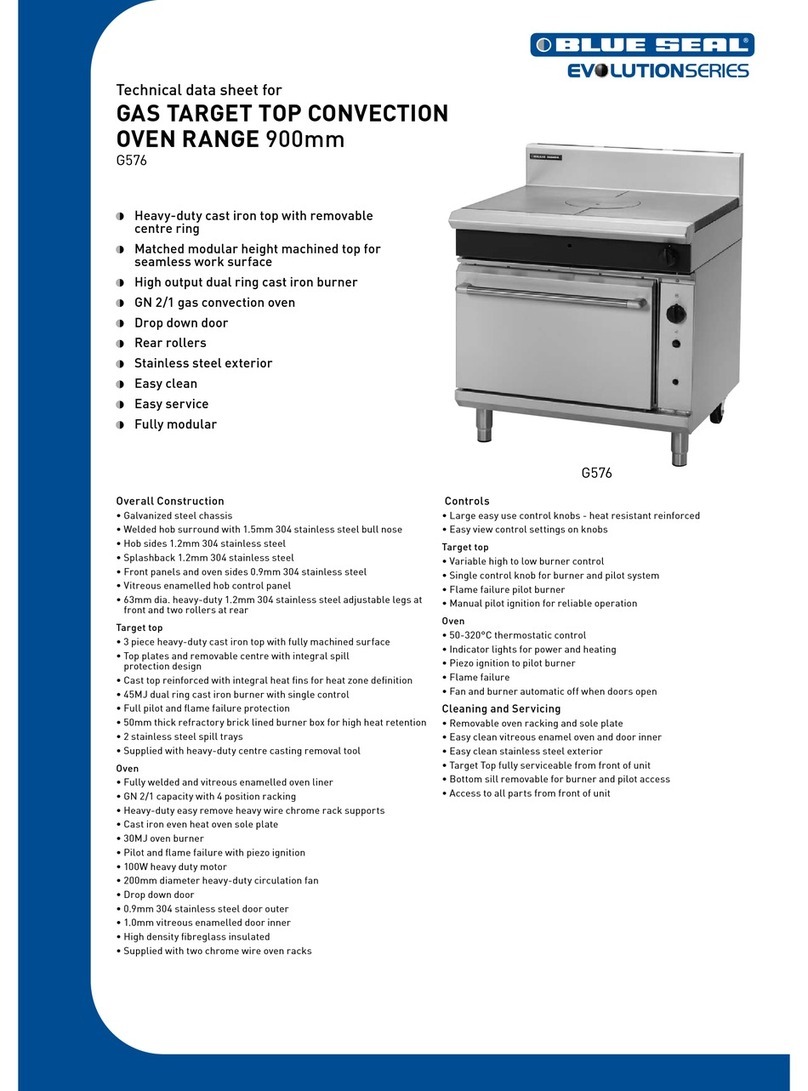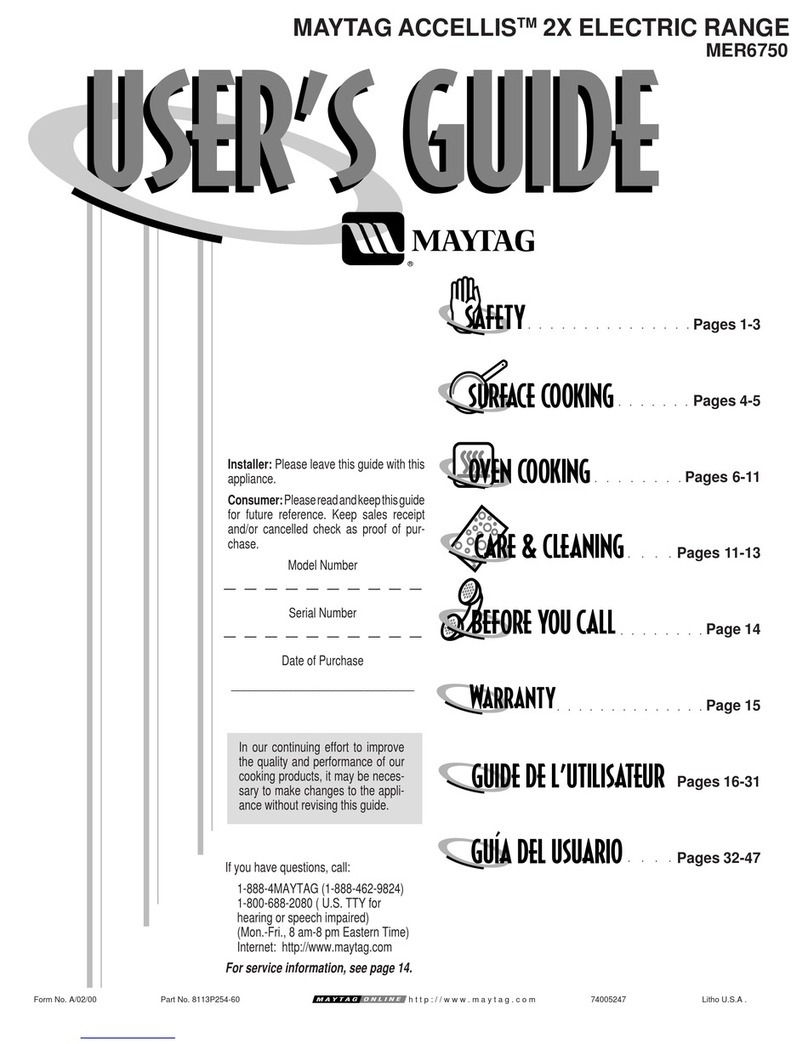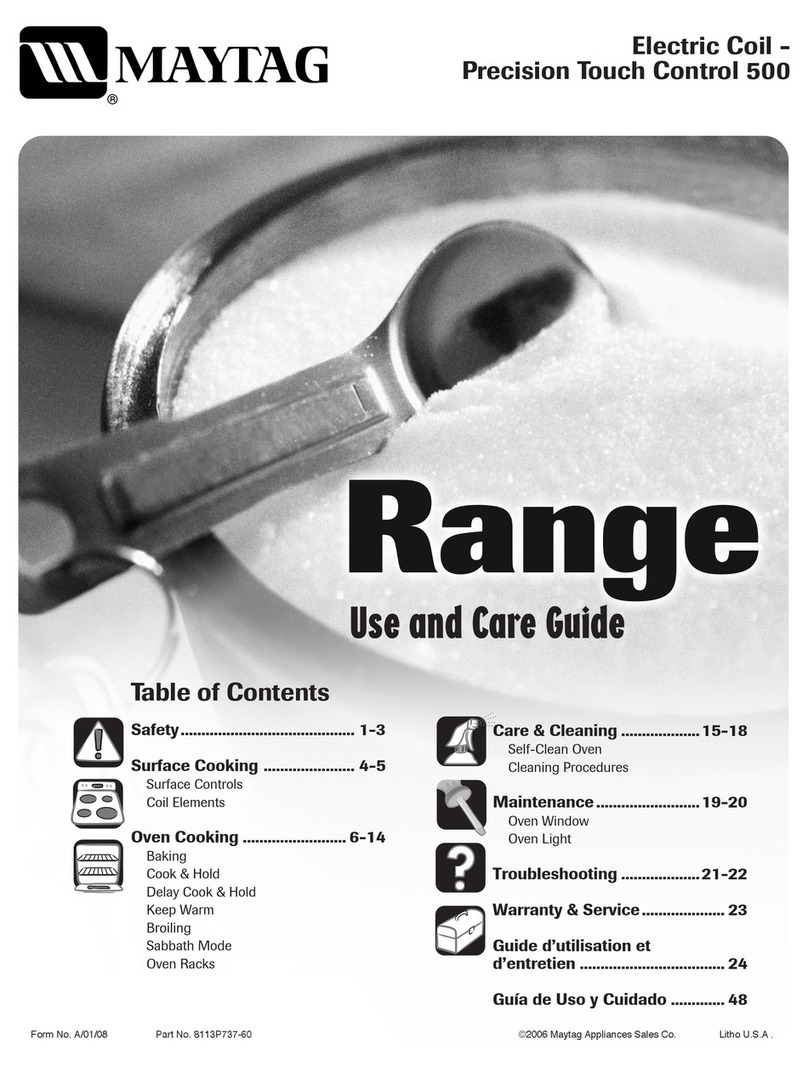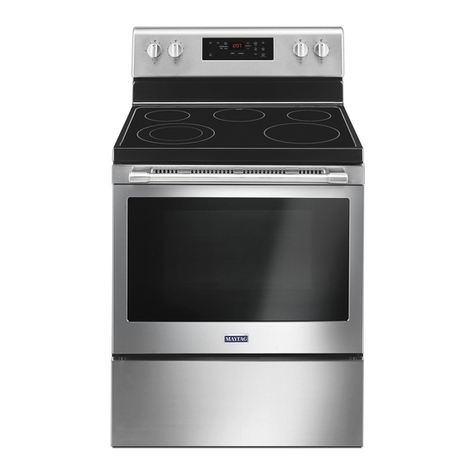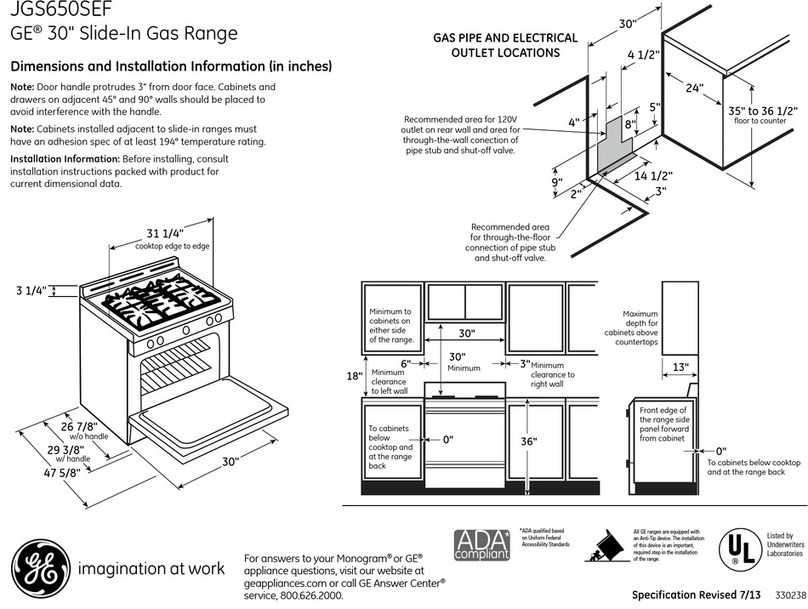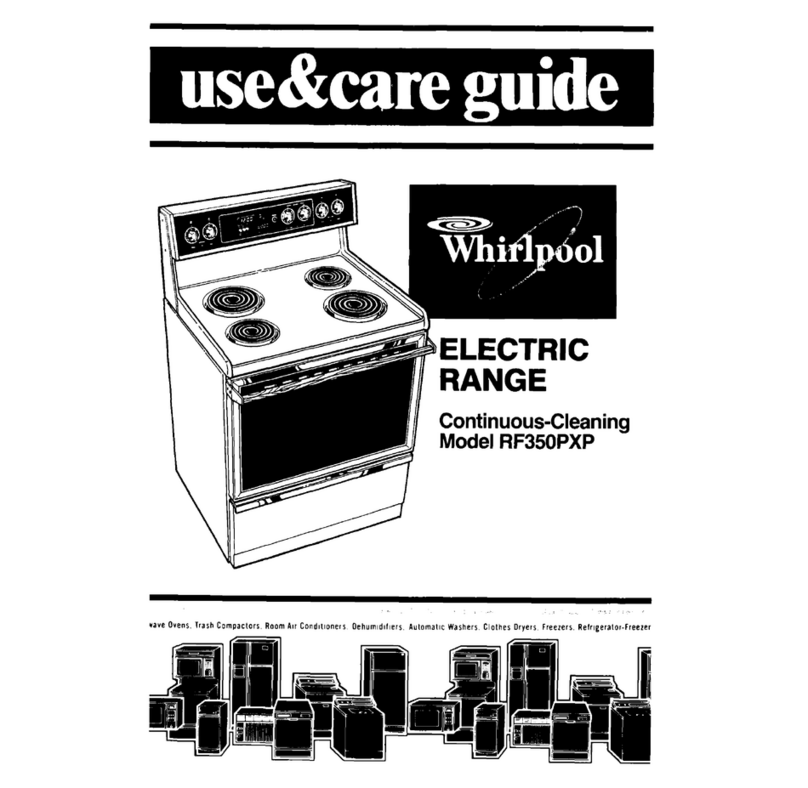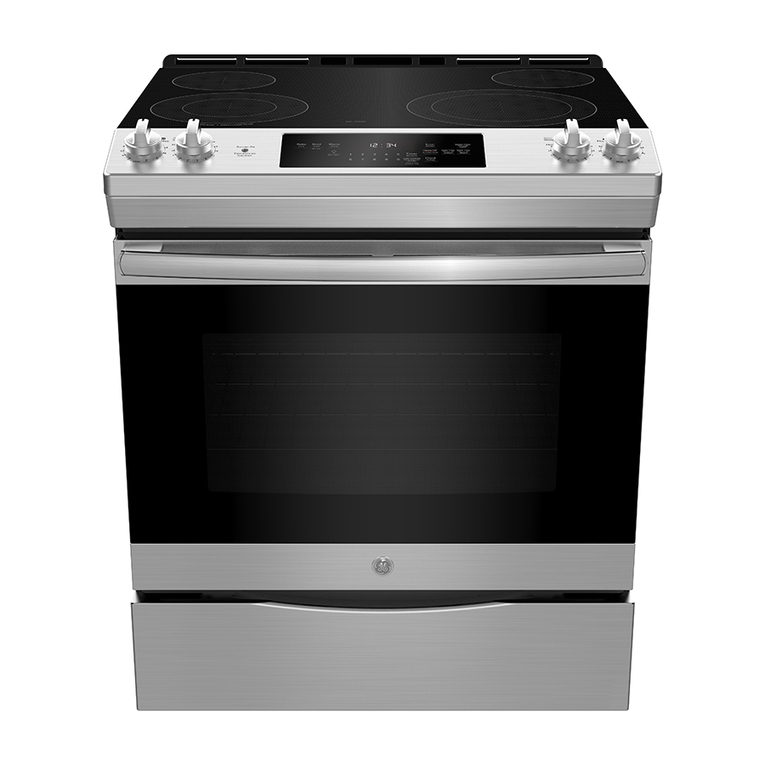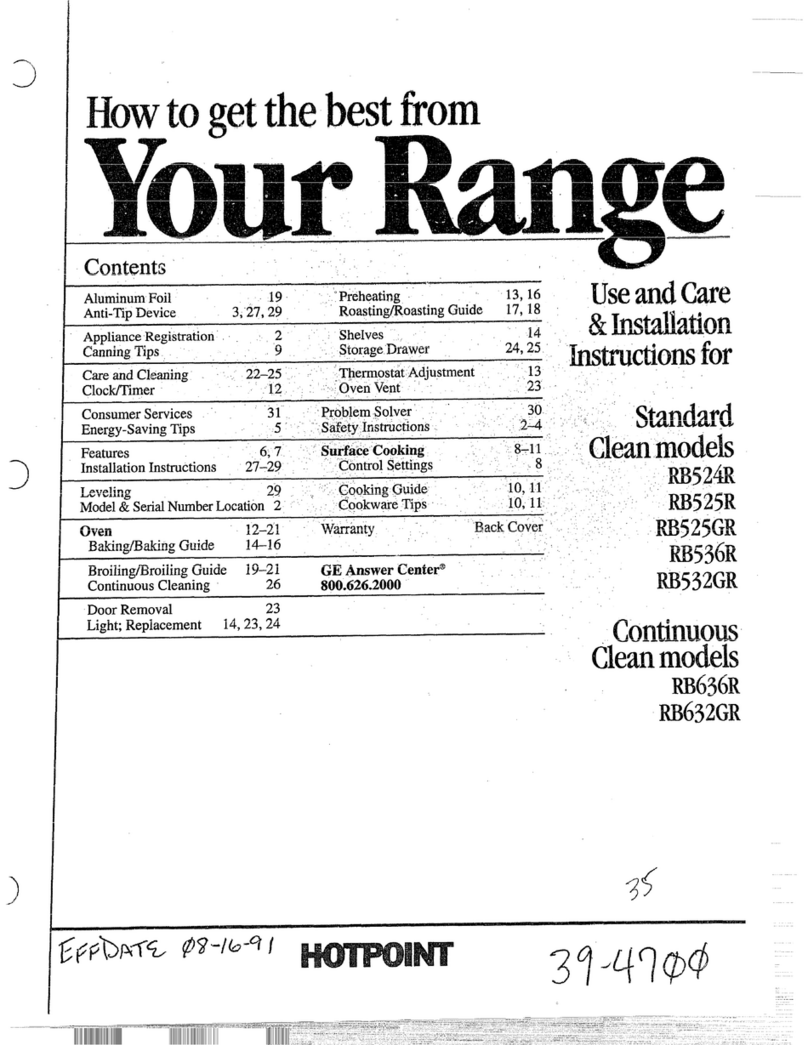
Childrenmustbetaughtthattheappli-
anceandutensilsinit canbehot.Lethot
utensilscoolinasafeplace,outofreachof
smallchildren.Childrenshouldbetaught
thatanapplianceisnotatoy.Children
shouldnotbeallowedtoplaywithcon-
trolsorotherpartsoftheunit.
CAUTION:NEVERstoreitemsofinterest
tochildrenincabinetsaboveanappliance
oronbackguardofarange.Childrenclimb-
ingontheappliancedoortoreachitems
couldbeseriouslyinjured.
NEVERuseapplianceasaspaceheaterto
heatorwarmaroomtopreventpotential
hazardtotheuseranddamagetotheap-
pliance.Also,donotusethecooktopor
ovenasastorageareaforfoodorcooking
utensils.
Donotobstructtheflowofcombustion
andventilationairbyblockingtheoven
ventorairintakes.Restrictionofairflowto
theburnerpreventsproperperformance
andincreasescarbonmonoxideemission
tounsafelevels.
Avoidtouchingovenventareawhileoven
isonandforseveralminutesafterovenis
turnedoff.Somepartsof theventand
surroundingareabecomehotenoughto
causeburns.Afterovenisturnedoff,do
nottouchtileovenventorsurrounding
areasuntiltheyhavehadsufficienttimeto
COO1,
Other potentially hot surfaces include
cooktop, areas facing the cooktop, oven
door and areas arotmd door and window.
WARNING: NEVER use appliance door,
or drawer, if equipped, as a step stool or
seat as this may result in possible tipping
of the appliance, damage to the appliance,
and serious injuries.
Do not touch a hot oven light bulb with a
damp cloth as the bulb could break. Should
the bulb break, disconnect power to the
appliance before removing bulb to avoid
electrical shock.
S ,ty
Always place a pan on a surface burner
before turning it on. Be sure you know
which knob controls which surface burner.
Make sure the correct burner is turned on
and that the burner has ignited. When
cooking is completed, turn burner off be-
fore removing pan to prevent exposure to
burner flame.
Always adjust surface burner flame so
that it does not extend beyond the bottom
edge of the pan. An excessive flame is
hazardous, wastes energy and may dam-
age the appliance, pan or cabinets above
the appliance.
NEVER leave a surface cooking operation
tmattended especially when using a high
heat setting or when deep fat frying.
Boilovers cause smoking and greasy
spillovers may ignite. Clean up greasy
spills as soon as possible. Do not use high
heat for extended cooking operations.
NEVER heat an unopened container on
tile surface burner or in the oven. Pressure
build-up may cause container to burst re-
sulting in serious personal injury or dam-
age to the appliance.
Use dry, sturdy pot holders. Damp pot
holders may cause burns from steam.
Dishtowels or other substitutes should
never be used as pot holders because they
can trail across hot surface burners and
ignite or get caught on appliance parts.
Always let quantities of hot fat used for
deep fat frying cool before attempting to
move or handle.
Do not let cooking grease or other flam-
mable materials accumulate in or near tile
appliance, hood or vent fan. Clean hood
frequently to prevent grease from accu-
mulating on hood or filter. When flaming
foods trader the hood turn the fan on.
NEVER wear garments made offlammable
material or loose fitting or long-sleeved
apparel while cooking. Clothing may ig-
nite or catch utensil handles.
Always place oven racks in the desired
positions while oven is cool. Slide oven
rack out to add or remove food, using dry,
sturdy pot holders. Always avoid reach-
ing into the oven to add or remove food. If
a rack must be moved while hot, use a dry
pot holder. Always turn the oven offat the
end of cooking.
Use care when opening the oven door. Let
hot air or steam escape before moving or
replacing food.
PREPARED FOOD WARNING: Follow
food manufacturer's instructions. If aplas-
tic frozen food container and/or its cover
distorts, warps, or is otherwise damaged
during cooking, immediately discard the
food and its container. The food could be
contaminated.
NEVER use aluminum foil to cover an
oven rack or oven bottom. Misuse could
result in risk of electric shock, fire, or
damage to the appliance. Use foil only as
directed in this guide.
Utersil Safety
Use pans with flat bottoms and handles
that are easily grasped and stay cool. Avoid
using unstable, warped, easily tipped or
loose-handled pans. Also avoid using
pans, especially small pans, with heavy
handles as they could be unstable and
easily tip. Pans that are heavy to move
when filled with food may also be hazard-
OUS.
Besure utensil is large enough to properly
contain food and avoid boilovers. Pan
size is particularly important in deep fat
frying. Be sure pan will accommodate the
volume of food that is to be added as well
as the bubble action of fat.
To minimize burns, ignition of flammable
materials and spillage due to uninten-
tional contact with the utensil, do not
extend handles over adjacent surface burn-
ers. Always turn pan handles toward the
side or back of the appliance, not out into
the room where they are easily hit or
reached by small children.
